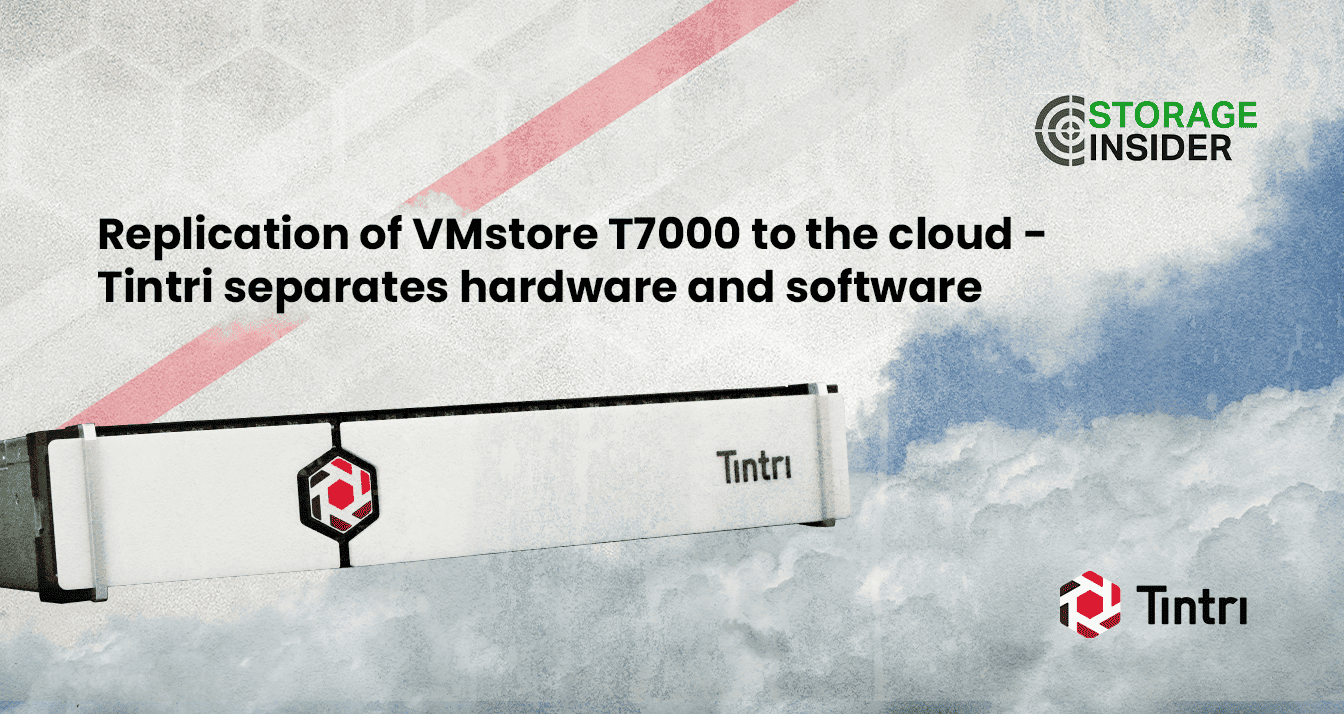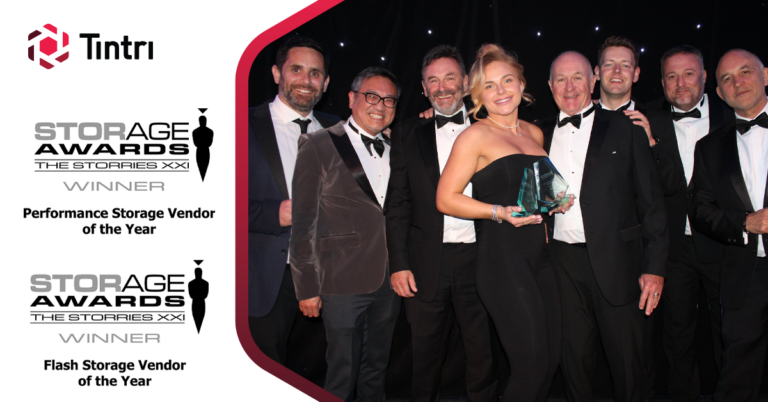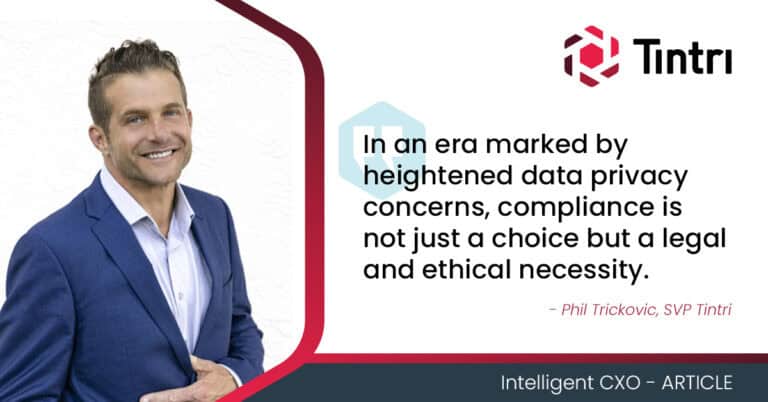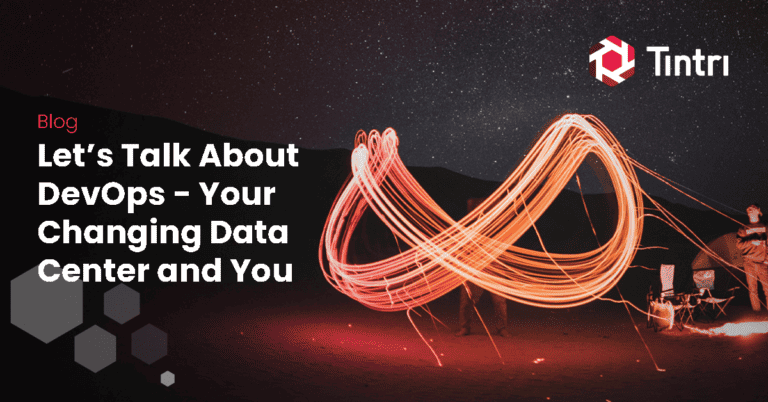This article was originally posted on 12/5/2022 at Storage Insider.
Tintri, a wholly owned subsidiary of DDN for about four years now, has announced a major new product release. Its most important message: The Tintri operating system is now implemented independently of the hardware in hyperscalers.

Tintri specialises in storage for VMs and their data. The relationship with DDN brings synergies but no internal competition, says Tintri’s CTO Brock Mowry. “DDN does storage for HPC, we service virtual machines, which means that, together, we can offer more to customers.”
The integration is progressing, he says, although Tintri continues to operate independently. The small German team is made up of original Tintri employees who are part of Tintri’s global workforce, which comprises about 100 employees. Mowry had a few examples up his sleeve regarding the successful merging of the two companies. For instance, the chassis of the flagship VMstore T7000 series, announced back in March, comes from DDN.
As a reminder, the VMstore T7000 series comprises three NVMe machines (7040, 7060 and 7080), with the flagship, the 7080, holding around 5,000 virtual machines or, compressed and deduplicated by a factor of 3, around 380 terabytes. This corresponds to around 125 TB capacity in raw form.
The end of the line has not yet been reached: 8 TB drives are currently supported, and the switch to 15 TB drives is planned for the first quarter of 2023. The capacity will roughly double then. One of the unique features of the products is that one can start with relatively few drives: In the minimum version, only ten of the 24 slots are filled. Says Mowry: “Users can gradually increase as their needs grow.”
Higher-level system control
At the same time, the control meta-level Tintri Global Center (TGC) enables pooling and higher-level control of the system. Storage capacity can be optimised with various tuning mechanisms. Auto QoS, for example, works at the file system level and distributes the available capacity sensibly. The function works during operation. If a machine consumes a conspicuously significant amount of resources, Tunable QoS goes into action to dim it down, unless it has been defined otherwise somewhere.
Back in August, a further step followed: the TX OS operating system was detached from the hardware and is now to be offered as PaaS at the hyperscalers, initially Azure and AWS. Other cloud providers are to follow later. At the same time, Tintri announced various complex functions as part of its neXt (“new exciting ten things at Tintri”) programme, which are to be realised over the next 18 months.
One of Tintri’s important, unique selling points are the analytical AI and ML algorithms the company utilises. “We can use them to analyse the behaviour of workloads in detail, and also predict how much storage they are likely to need over a period of time, or how much disaster recovery space is required for them,” explains Mowry. In addition, Tintri customers are given analytics tools to use for free, allowing them to perform analyses of interest independently.
The AI functions can also be practical for acquisitions, e.g. with the possibility to model how many resources are needed to integrate 1,000 new VMs into the environment.
More finely granulated backup functions
The tintri.io website can be used to learn more about the new hybrid architectures possible with Tintri’s cloud ecosystem. Trintri also wants to integrate a professional services portal into the website, where customers can book the relevant services directly. “Here we are also working with partners,” explains Mowry.

“We want to support hybrid worlds,” states Brock Mowry, CTO, Tintri
“Currently, we can only take snapshots of the VM, but in the future we will add the metadata, thus individual files or folders can also be regenerated,” so the CTO. At the same time, the replication of stationary T7000 machines into the cloud is to be made possible, where they can also be booted up again. This applies to individual files, folders, and entire VMs. Mowry: “This makes sense for migrations, for disaster recovery as well as in development.”
The enhanced hybrid cloud management also includes the accelerated migration of virtual workloads to the cloud. The corresponding functions have been improved and expanded. For example, it is now possible to define a migration set, subsequently operate the two sides synchronously for a while and finally, at a previously defined point in time, perform the last migration and switch off the other side
Expand for details of your consent
Overall, Tintri wants TGC to become the overarching storage management hub of the hybrid cloud. “So far, TGC has been running on a single VM, which doesn’t scale,” so Mowry. Once the functions are realised, several TGC VMs can be distributed in the overall system, taking on different roles. For example, one instance at the cloud provider could be responsible for the analytics of the data located there. Another one, in the local data centre, could take over the work that occurs on the VMstore machines, such as catalogue, snapshots, or data replication.
Protection against ransomware
Protection against ransomware will play an even more important role than before. To this end, the role-based access concept is to be expanded to include administrative roles as well as the principle of double scrutiny regarding important workflows. In addition, deep metrics are planned to detect ransomware before it can cause major damage.
“Machines on which ransomware is wreaking havoc often lose their data efficiency, and the processor they are working with is highly loaded”. Mowry describes the indicators. If something like this is detected, a message is planned to be sent to the admin, who is also to find out immediately when the last intact snap was created.
Furthermore, the software functions of a third-party manufacturer are to be integrated into the portfolio under the Tintri label, which automate penetration tests. To do this, the software connects to the VMs on the one hand and to Tintri on the other, via APIs. “We recommend regularly cloning the application environment for this purpose, to then test it there,” so Mowry. This makes it easier to detect misconfigurations and fix them before they become a gateway for digital malware or cause other trouble.
The expansion of Kubernetes functions is also of central importance. TX OS already supports VMware Tanzu, but only with “basic functions”. For example, QoS, snapshots and replication do not yet work. “We will have implemented the extended functions for generic Kubernetes by the second half of 2023, which means they will also run on Tanzu,” Mowry promises.
Says Mowry: “Anyone operating TX OS in a hybrid environment should not have to be a specialist.” The environment should be able to manage the entire VM storage in a hybrid Tintri environment.
In the near future, Tintri plans to move into subscription models for its cloud offering. “For the physical appliance, we are still thinking about this,” explained Mowry. What is certain, however, is that the hardware developers are already working on a new, even larger product series. It is to take up current technical storage trends. Mowry does not yet want to comment on what these are.
Original article:
https://www.storage-insider.de/tintri-trennt-hard-und-software-a-608fcd336237331c30a8d98a824101e3/





